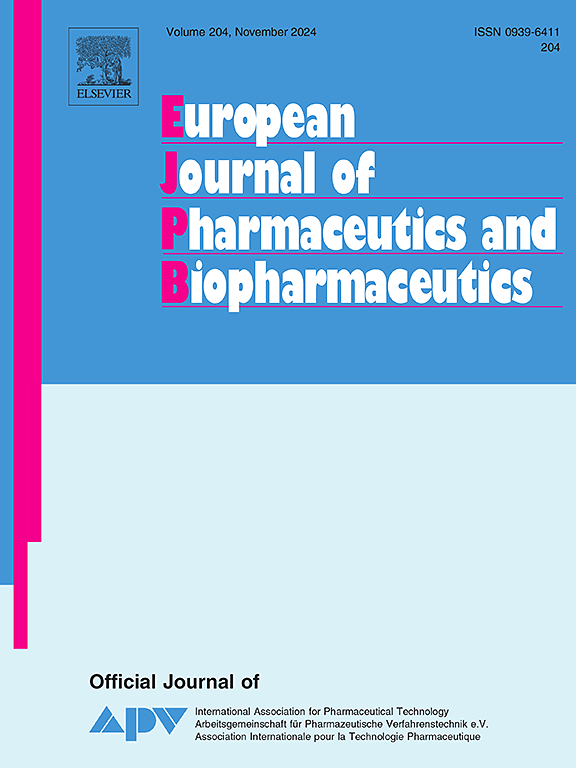应用复杂粒子设计策略控制生物医学纳米颗粒在体内的分布和药物释放。
IF 4.4
2区 医学
Q1 PHARMACOLOGY & PHARMACY
European Journal of Pharmaceutics and Biopharmaceutics
Pub Date : 2025-01-16
DOI:10.1016/j.ejpb.2025.114634
引用次数: 0
摘要
利用靶向纳米颗粒作为选择性给药系统是增加到达靶点的活性物质量的有力工具。这可以提高治疗效果,同时减少药物不良反应。然而,纳米颗粒面临着几个挑战:注射后,血浆蛋白的直接粘附可能会掩盖靶向配体,从而降低靶细胞的选择性。此外,调理可导致过早清除,受体或酶的广泛存在限制了靶细胞识别的准确性。纳米颗粒也可能遭受内体包裹,并且药物的控制释放可能因过早爆裂释放或靶部位颗粒滞留不足而受阻。已经开发了各种策略来解决这些不良事件,例如实现可切换颗粒特性,调节形成的蛋白质冠的组成,或使用基于点击化学的靶向方法。这导致了越来越复杂的颗粒设计,提出了这个发展是否真的提高体内治疗效果的问题。这篇综述概述了靶向给药的挑战,并探讨了文献中描述的潜在解决方案。随后,讨论了发展纳米颗粒药物递送概念的适当策略。本文章由计算机程序翻译,如有差异,请以英文原文为准。

Control of biomedical nanoparticle distribution and drug release in vivo by complex particle design strategies
The utilization of targeted nanoparticles as a selective drug delivery system is a powerful tool to increase the amount of active substance reaching the target site. This can increase therapeutic efficacy while reducing adverse drug effects. However, nanoparticles face several challenges: upon injection, the immediate adhesion of plasma proteins may mask targeting ligands, thereby diminishing the target cell selectivity. In addition, opsonization can lead to premature clearance and the widespread presence of receptors or enzymes limits the accuracy of target cell recognition. Nanoparticles may also suffer from endosomal entrapment, and controlled drug release can be hindered by premature burst release or insufficient particle retention at the target site. Various strategies have been developed to address these adverse events, such as the implementation of switchable particle properties, regulating the composition of the formed protein corona, or using click-chemistry based targeting approaches. This has resulted in increasingly complex particle designs, raising the question of whether this development actually improves the therapeutic efficacy in vivo. This review provides an overview of the challenges in targeted drug delivery and explores potential solutions described in the literature. Subsequently, appropriate strategies for the development of nanoparticular drug delivery concepts are discussed.
求助全文
通过发布文献求助,成功后即可免费获取论文全文。
去求助
来源期刊
CiteScore
8.80
自引率
4.10%
发文量
211
审稿时长
36 days
期刊介绍:
The European Journal of Pharmaceutics and Biopharmaceutics provides a medium for the publication of novel, innovative and hypothesis-driven research from the areas of Pharmaceutics and Biopharmaceutics.
Topics covered include for example:
Design and development of drug delivery systems for pharmaceuticals and biopharmaceuticals (small molecules, proteins, nucleic acids)
Aspects of manufacturing process design
Biomedical aspects of drug product design
Strategies and formulations for controlled drug transport across biological barriers
Physicochemical aspects of drug product development
Novel excipients for drug product design
Drug delivery and controlled release systems for systemic and local applications
Nanomaterials for therapeutic and diagnostic purposes
Advanced therapy medicinal products
Medical devices supporting a distinct pharmacological effect.

 求助内容:
求助内容: 应助结果提醒方式:
应助结果提醒方式:


